If you’re not eaten by a shark or crocodile there’s a seemingly endless list of venomous jellyfish, fish, shells and octopus lined up to sting and bite. Then, if you’re lucky enough to survive a dip in the water and stagger onto dry land you’re sure to be bitten by at least one of the world’s most deadly snakes or spiders. It’s a reputation that the popular press love to promote about Australia, but surprisingly they’ve failed to cash in on the fact that Australia is also home to some of the most venomous plants in the world. Yes venomous, not poisonous.
These silent ‘ambush’ plants are found lurking in Australia’s rainforests from Cape York down to the Victorian border, just waiting to envenomate the unwary. In south-east Queensland (SEQ) three species of stinging tree can be found: Giant Stinging Tree (Dendrocnide excelsa); Shiny-leaved Stinging Tree (D. photinophylla); and, Gympie Stinger or Gympie-Gympie (D. moroides). The latter packs the most painful sting of all the stinging trees in Australia and is ranked up there amongst the most painful of all stinging plants worldwide. Luckily it is very rare in SEQ with substantial populations not starting to appear until Gympie and then further north.
The Gympie Stinger, although called a stinging tree, is a soft, open growing shrub that typically grows to around 4-5 metres high. Unlike the Gympie Stinger, the aptly named Giant Stinging Tree and the Shiny-leaved Stinging Tree grow into substantial rainforest trees. Giant Stinging Trees top out at a magnificent 40m. To help stabilise these rainforest giants their fluted trunks are often buttressed. The bark is very soft, smooth and is a pale brownish white. The Shiny-leaved Stinging Tree can reach 20m in its rainforest habitats.
For such large trees, the wood of stinging trees is remarkably soft, spongy, wet and stringy – ‘fibrewood’ is a less known common name. If you ever have the ‘pleasure’ of having to cut a stinging tree with a chainsaw be ready for a pulpy mess to be thrown out and for the chain to be bound up almost as effectively as the Kevlar fibres in your protective chaps. Indigenous people used these long fibres to make nets and lines, ate the fruit and even used the leaves to relieve the pain of arthritis and rheumatism.
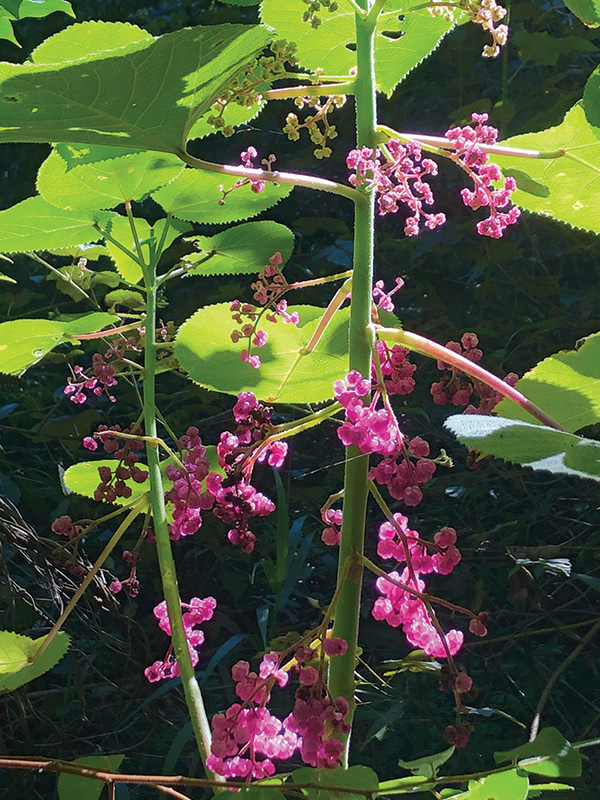
In the rainforest, stinging trees are specialist pioneer species. They require strong sunlight to stimulate seed germination and a lack of wind for successful growth. They are particularly well adapted for colonising rainforest gaps caused by large tree falls and can come up in profusion following storm events. They are also frequently found along rainforest tracks and creek edges. The Gympie Stinger quickly becomes part of the rainforest shrub layer as ‘proper’ trees race for the sunlight. The Giant and Shiny-leaved Stinging Trees continue to grow to become part of the rainforest canopy and mid-stratum.
The leaves of the Gympie Stinger and young Giant Stinging Trees can be the size of a large dinner plate and are covered in a mass of stinging hairs which give them a fuzzy look, which almost invites being touched (don’t do it!). The leaves are light green, soft, prominently veined, heart-shaped, regularly toothed and alternate. As well as having stinging hairs on the leaves, the long petioles, branches and stems are also covered by them. As they mature, the trunk and branches of the Giant Stinging Tree lose their stinging hairs and the leaves become smaller (10-22cm long), less hairy and less venomous.
As its name implies, the Shiny-leaved Stinging Tree has glossy, dark green, softish leaves that are 7–17cm long. They are more drawn out and can be either bluntly toothed or entire. The stinging hairs are largely confined to the leaf veins and are also scattered over the petiole and young branches. Its leaves are not nearly as distinct as other stinging trees, so it’s just as well that the shiny-leaved stinger is the least toxic of the stinging tees.
Despite being protected by stinging hairs the leaves of stinging trees are voraciously attacked by insects as shown by the large number of irregular holes chewed into them. It is not unusual to see the vast majority of leaves of Giant Stinging Trees exhibiting extensive feeding damage.
The most venomous young leaves are also blithely chowed down by Red-legged Pademelons whilst possums are known to feed on older less venomous leaves. As well as feeding on the multitude of insects attracted to the leaves, many birds as well as bats feed on the gelatinous raspberry like fruit which can be purple, pink, red and almost white. This is despite the fruit also being protected by stinging hairs. Birds and bats then disperse the small seed that they’ve also ingested, through the forest. Due to their colouration masses of these fruit can put on quite an impressive display.
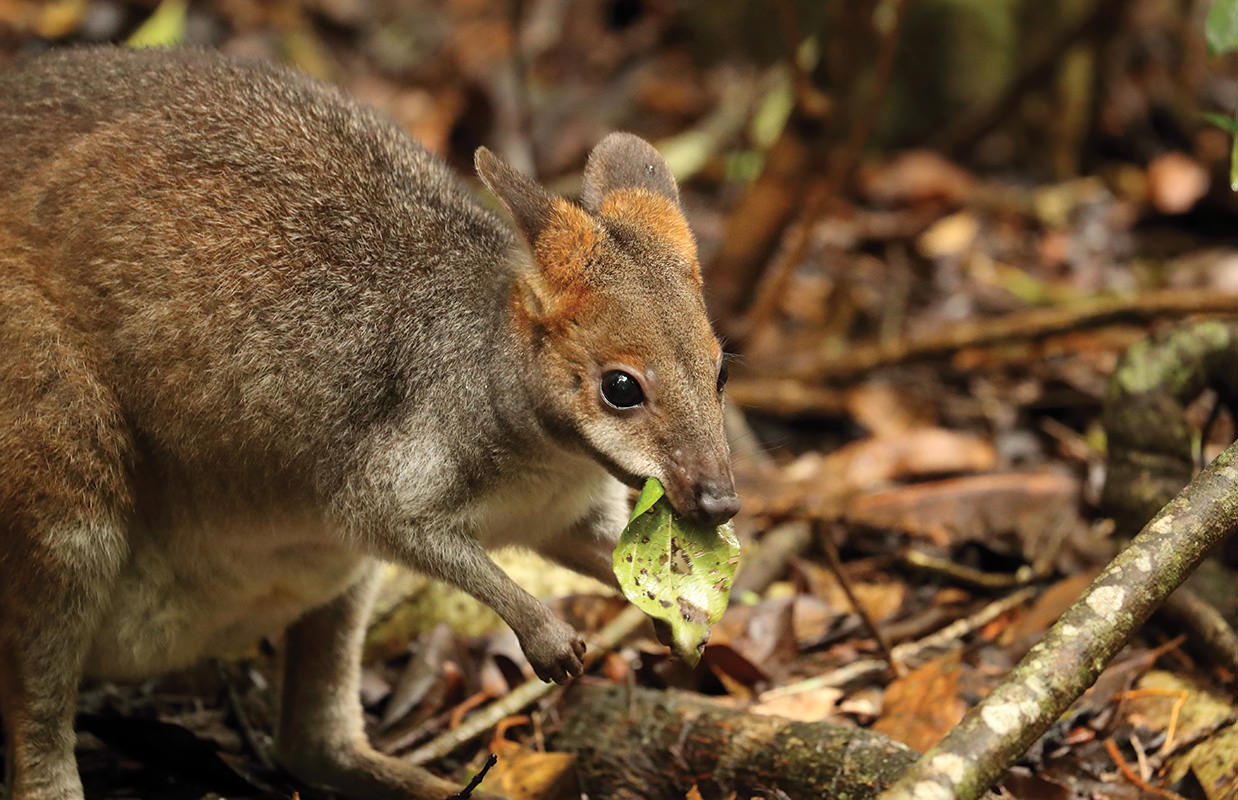
The flowers of stinging trees are small, nondescript and greenish white in colour. They are unisexual and the plants can be either male or female.
So just what is the point of having this ferocious defence mechanism if your leaves and fruit aren’t protected from native mammalian herbivores and frugivores? (The hairs offer no protection whatsoever from insect attack). Stinging trees are in the same family (Urticaceae) as the nettles and the Greek translation of the genus reflects this – ‘dendros’ is tree and ‘knide’ is nettle, so Dendrocnide literally translates as tree nettle. The nettles developed stinging hairs to protect them from grazing mammals and the speculation is that the Dendrocnide, in a classic arms race, further refined and added to this defence due to grazing pressure from Australia’s now extinct grazing megafauna.
The severity, intensity, longevity and re-occurrence of pain caused by an encounter with a stinging tree depends on a number of factors. A minor brush past can result in pain that lasts an hour or two. A bad sting by a Gympie Stinger has been described by Marina Hurley, who did her PhD on stinging trees, as:
“The worst kind of pain you can imagine – like being burnt with hot acid and electrocuted at the same time”.
After blundering into a Gympie Stinger, Ernie Rider recounted:
“I remember it feeling like there were giant hands trying to squash my chest. For two or three days the pain was almost unbearable; I couldn’t work or sleep, then it was pretty bad pain for another fortnight. The stinging persisted for two years and recurred every time I had a cold shower.”
The secret to this pain is the delivery system – hollow, fine, silica hairs that are filled with a little studied cocktail of toxins, the combination of which probably varies depending on the stinging tree species. These hairs easily break off from the plant when touched and the hair tip then breaks as they puncture the skin. In this way they act as miniature hypodermic needles by embedding themselves in the skin and delivering their toxin. These hairs are not broken down by the body’s immune system and are extremely difficult to remove.
The toxin is also extremely stable, hence its ability to produce pain with changes in skin temperature or application of pressure to the stung site months or even years later. On top of this, new skin can grow over these imbedded needles, which also accounts for the ongoing pain associated with bad stings. This impressive toxin stability is further highlighted by pressed herbarium samples which are still capable of producing pain decades after being collected. It therefore goes without saying that dead leaves on the forest floor still pack a toxic punch. Interestingly the toxins don’t cause any damage to the body – they ‘just’ produce pain.
There have been many ‘bush remedies’ touted for stinging tree stings, but none of these are effective and can even prolong the pain and suffering. The current recommended first aid treatment is the removal of as many of the hairs as possible using wax strips (don’t rub the site) and then gritting your teeth as you go along for the ride.
References & Further Reading
Hurley M (2000) Foliage Attributes and Growth Dynamics of Stinging Trees (Dendrocnidespp.) in northern Australian upland tropical rainforest: implications for herbivores. Australian Journal of Botany, 48:191-201.
https://phys.org/news/2018-09-worst-kind-pain-stung-tree.html
www.australiangeographic.com.au
www.saveourwaterwaysnow.com.au
Tony Mlynarik
Conservation Partnerships Officer
Brisbane City Council

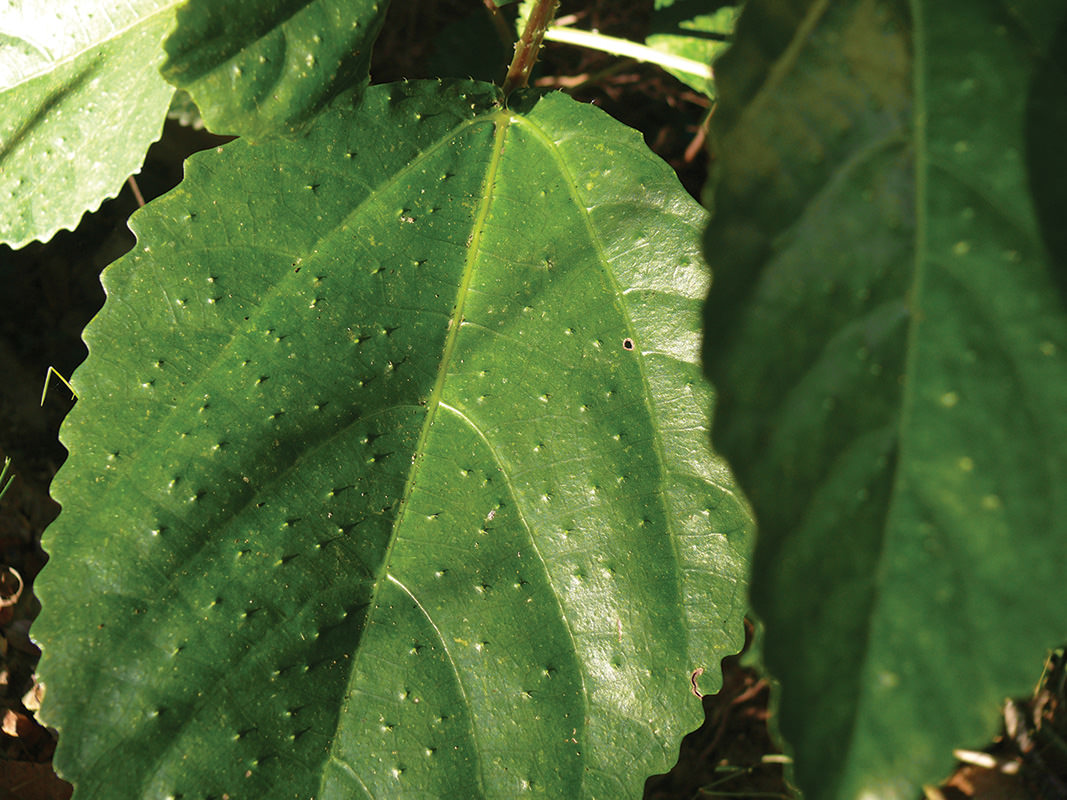
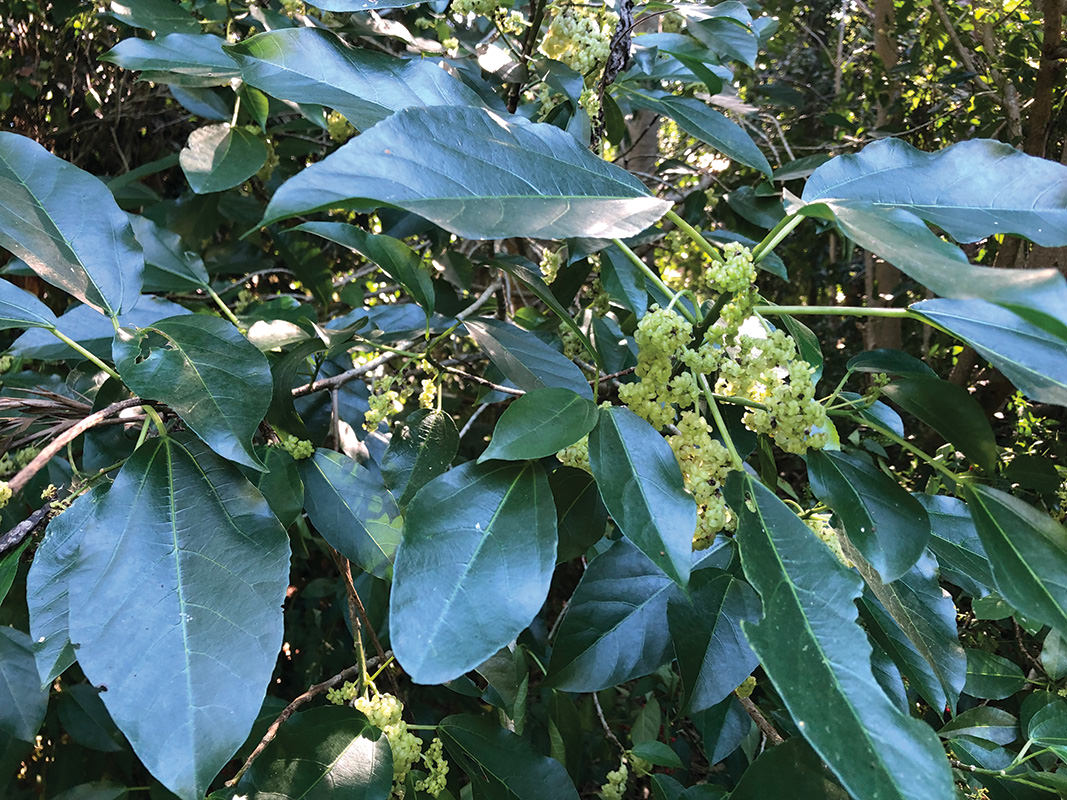
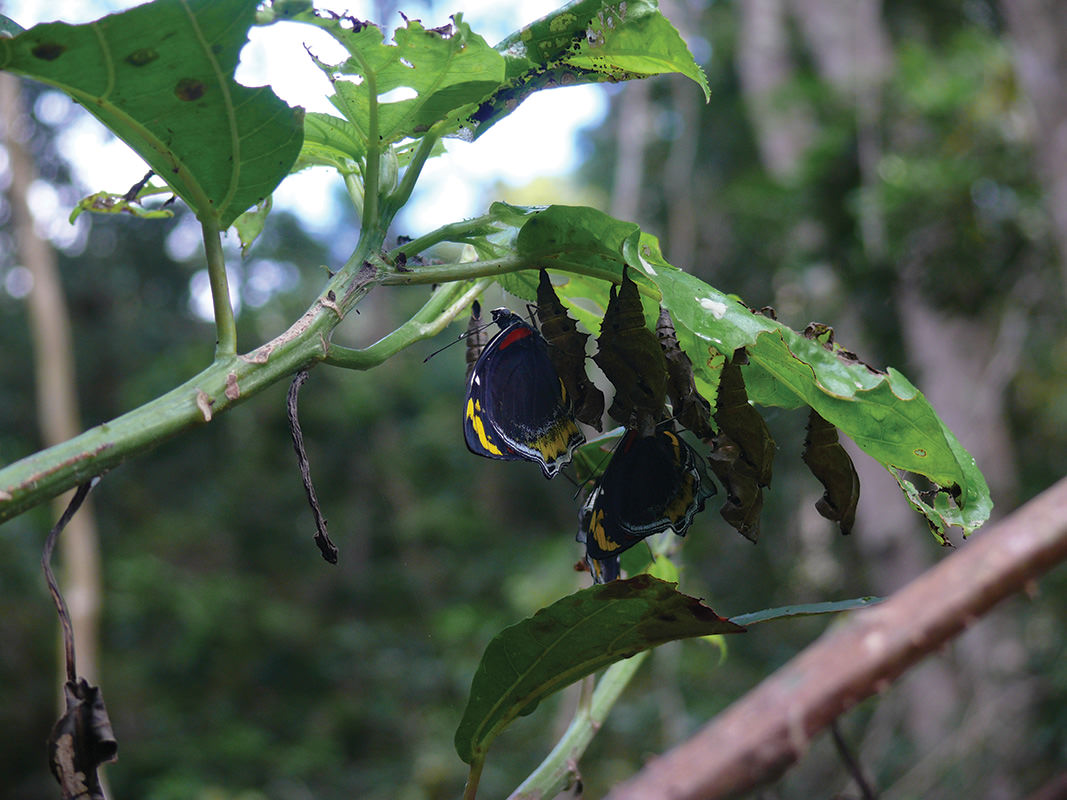
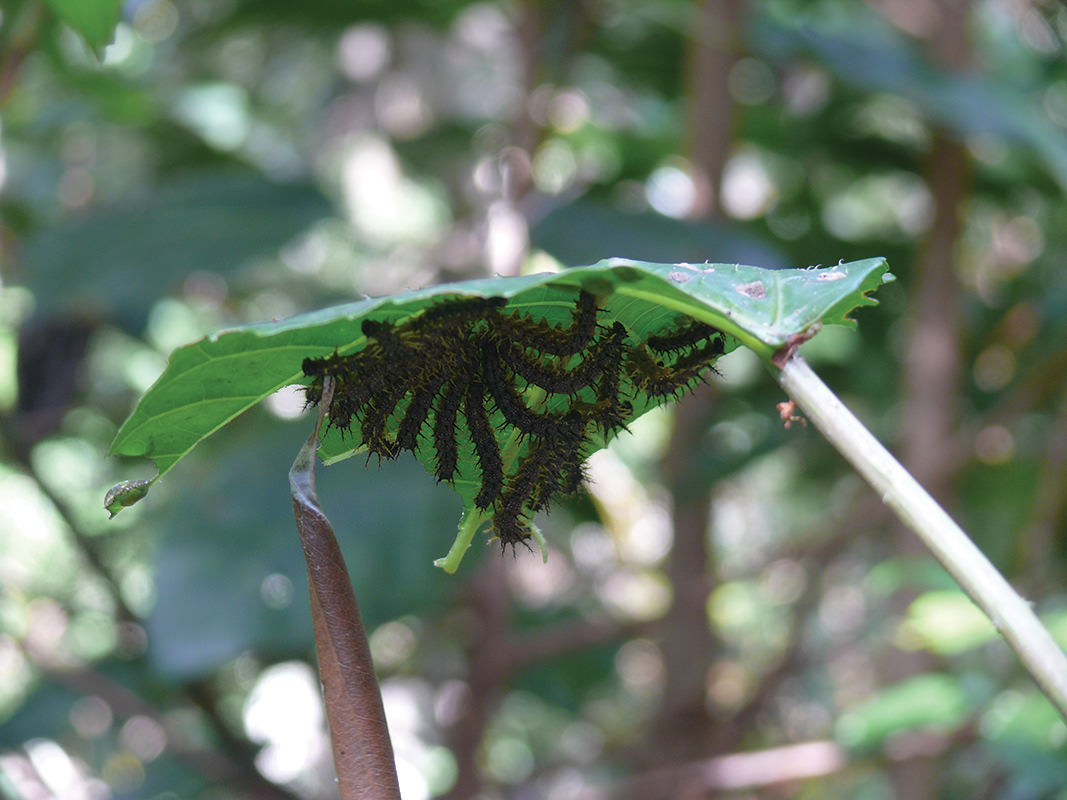

Is it possible to eat the fruits/berries from a Australian Stinging Plant ( Dendrocnide excelsa ) if so how do you remove the hairs safely to consume ??